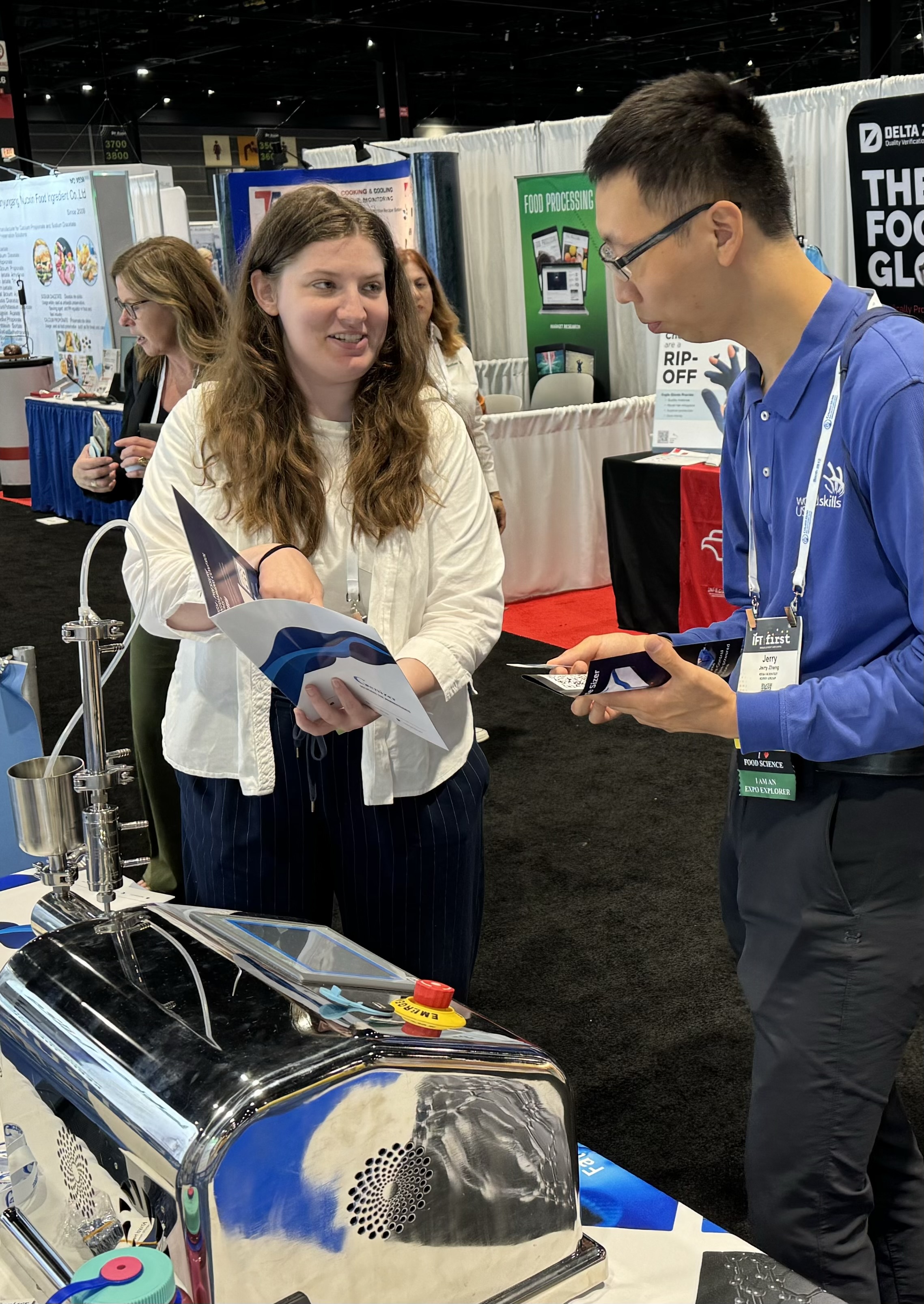Spotlight on Alternative Proteins at IFT first
 From pea protein meatballs to microalgae, alternative proteins were the hot topic of IFT First 2024. Exhibitors, attendees and media like Alt Meat Magazine shared about advancements in protein.
From pea protein meatballs to microalgae, alternative proteins were the hot topic of IFT First 2024. Exhibitors, attendees and media like Alt Meat Magazine shared about advancements in protein.In his talk, Dr. Reza Ovissipour of Texas A&M covered some of the issues with bovine cell cultured meat. He discussed testing different proteins on the bovine cells and the lack of systemic -omics approaches. He also emphasized the sustainability of cell cultured meat. Additionally, the talk touched on cultural challenges like religious aspects of meat and Florida’s ban on lab grown meat.
In “Advancing Food System Innovation Through Novel Technologies” the speakers discussed meat alternative products. Ellen Kim, marketing director at Plantspired Brand Innovation, spoke about tofu. She emphasized reaching beyond vegetarians to the growing flexitarian market. Her goal is to make tofu a staple in every household in the United States.
In the same session, BlueNalu Inc CEO Lou Cooperhouse talked about innovations in cell culture seafood. BlueNalu identified cell culture seafood as an untapped market. BlueNalu has chosen to focus on bluefin tuna, because of its endangered status and expensive price. This price allows them to match the current price, while offering year-round access, consistent supply and quality. Additionally, they can create raw fish safe for pregnant women and children.
Byron Perez, who works for the Sustainable Food Processing Lab, gave a talk called “Influence of Extraction Process on Microalgae Protein Fractionation and Functionality for Food Applications” . He spoke about microalgae’s advantages as a protein source, like efficiency, little need for arable land, and nutrient richness. The talk focused on how to best perform microalgae cell disruption and separation. They compared high-pressure homogenization (HPH) and pulsed electric fields with incubation (PEF). HPH had a higher initial yield, PEF maintained more cell morphology, and that more protein was recovered from PEF, likely because of the cake layer used. Perez noted that HPH was preferred for emulsion behavior while PEF was better for foams and explained that sometimes it may be best to combine methods.
IFT First was a fascinating look into new developments in meat alternatives and how high-pressure homogenization can add to the field. We are excited to see how the field grows next year!

 USD
USD 949-932-0294 Los Angeles
949-932-0294 Los Angeles  Nano@Genizer.com
Nano@Genizer.com